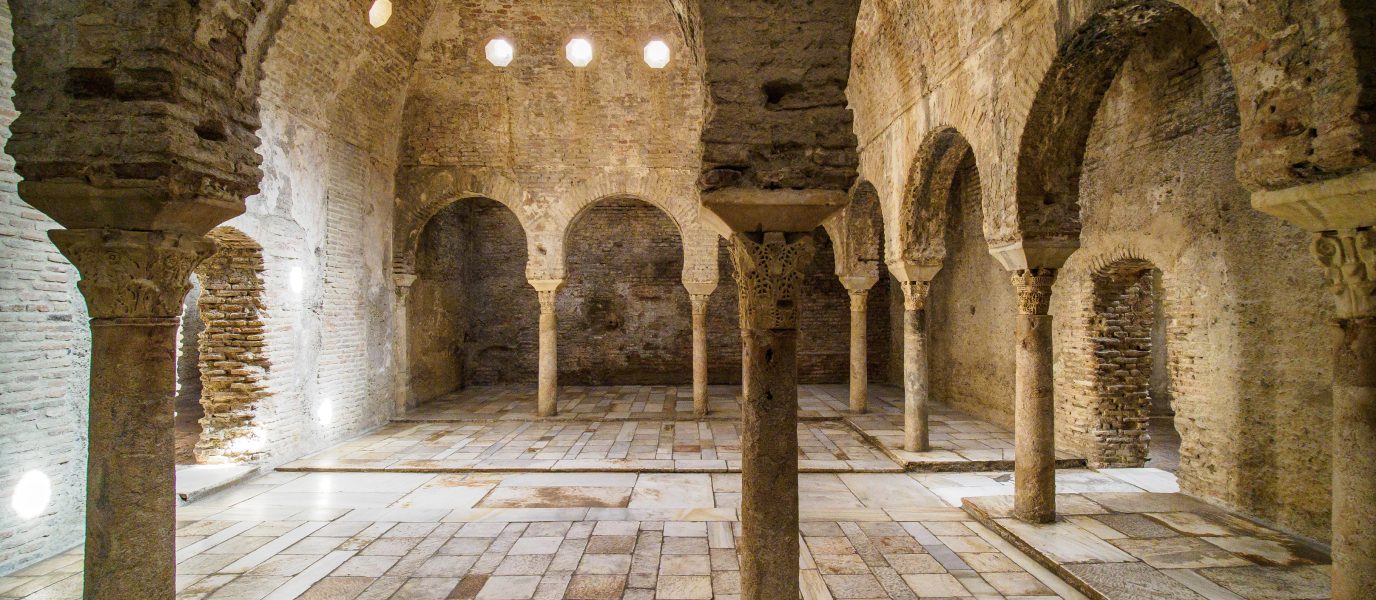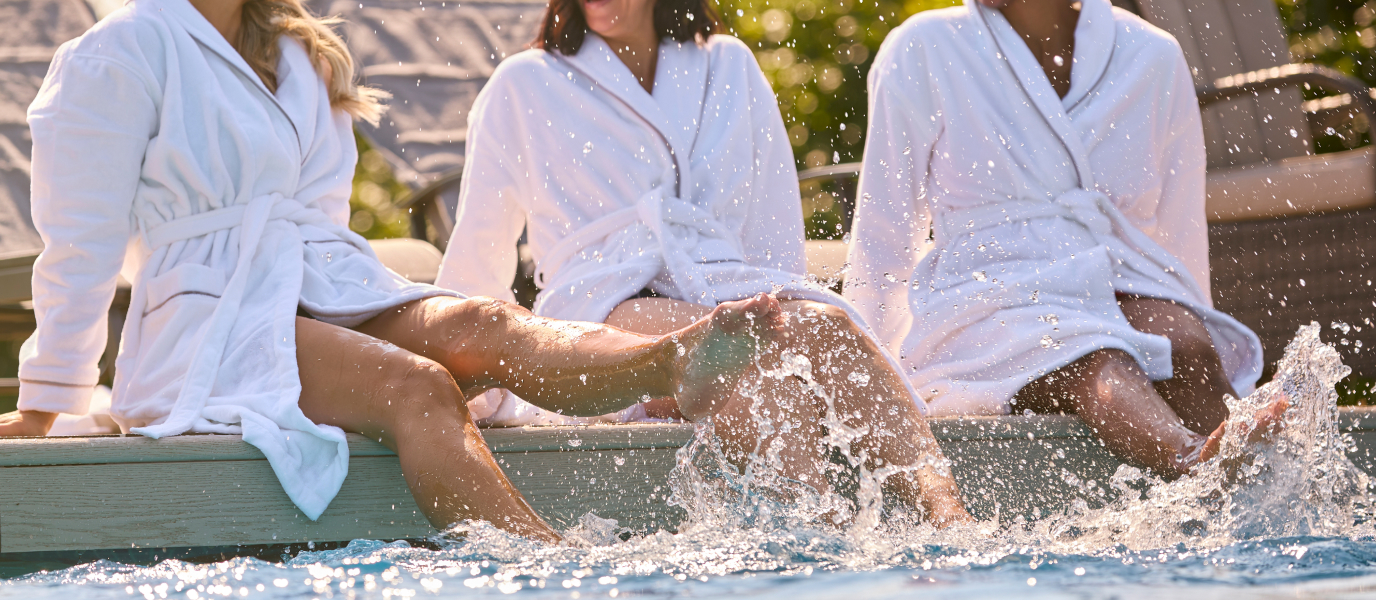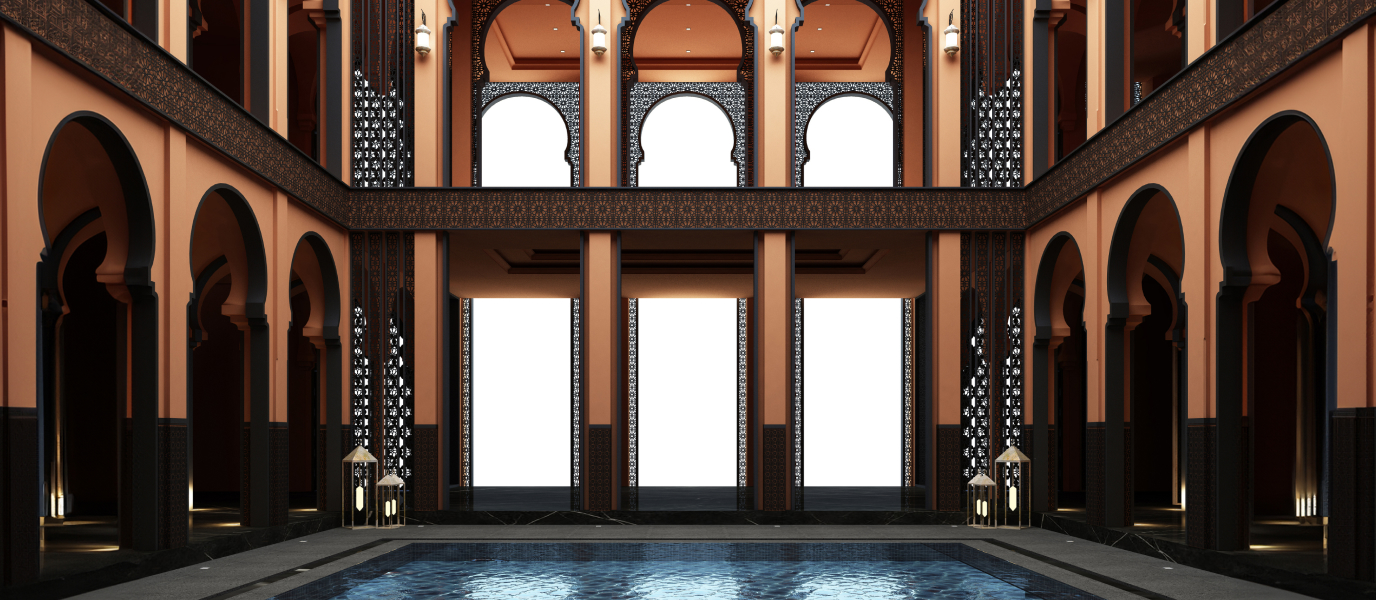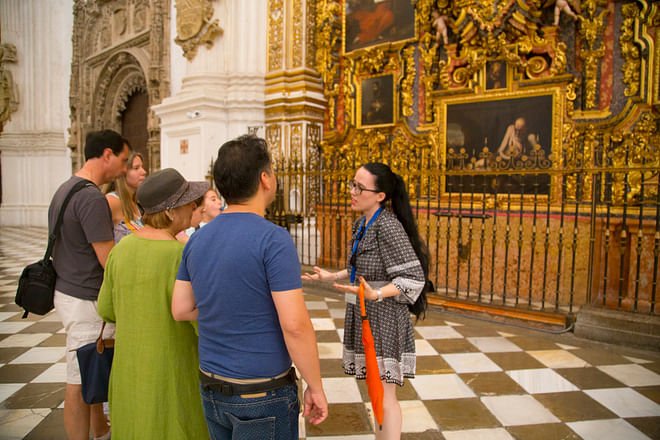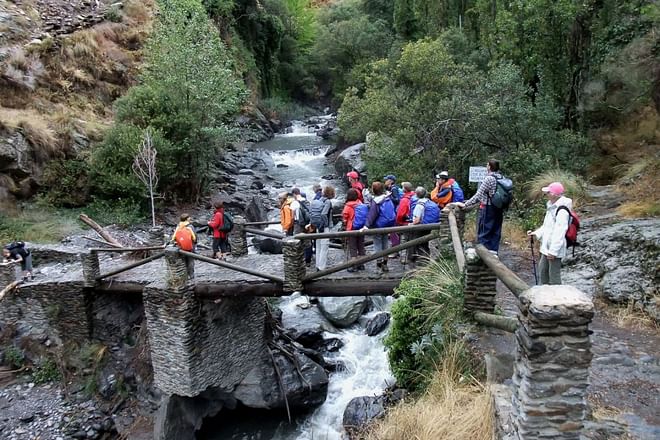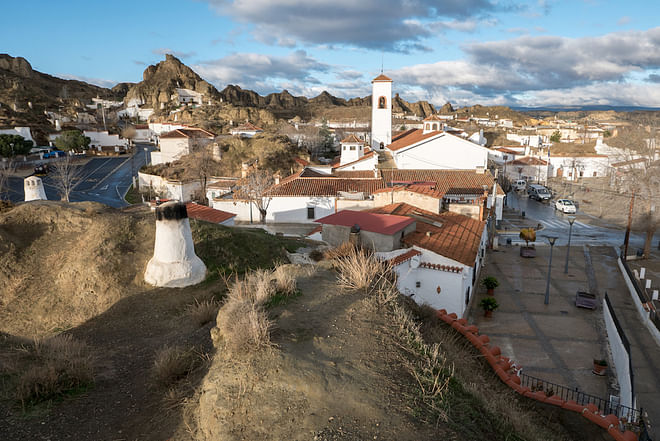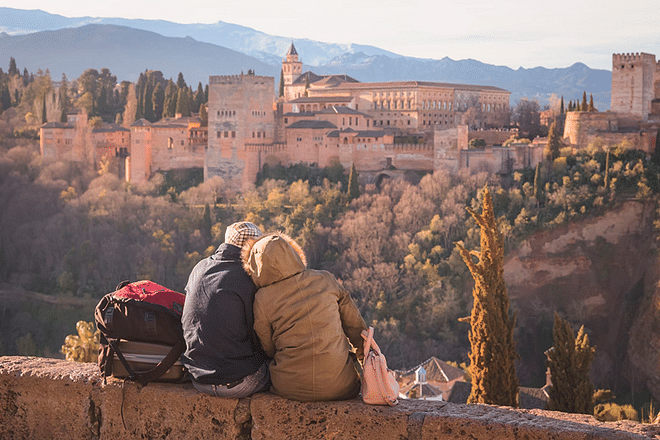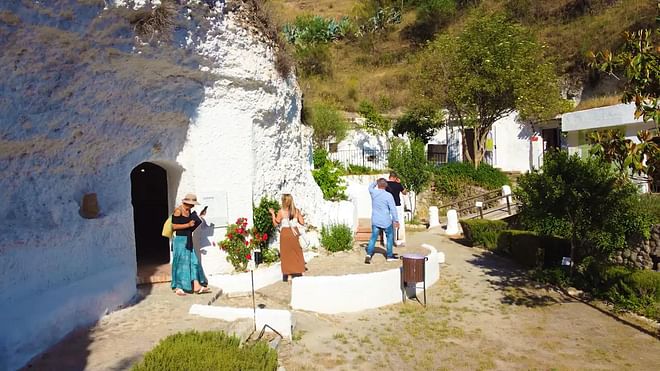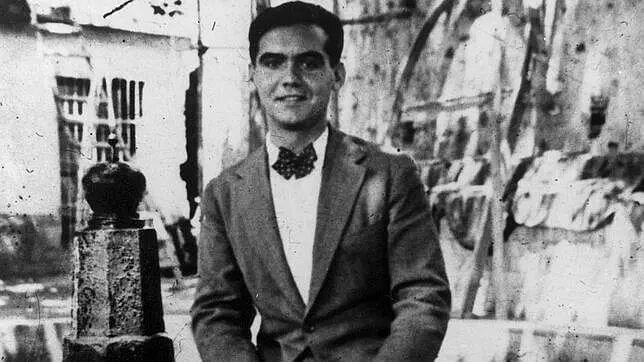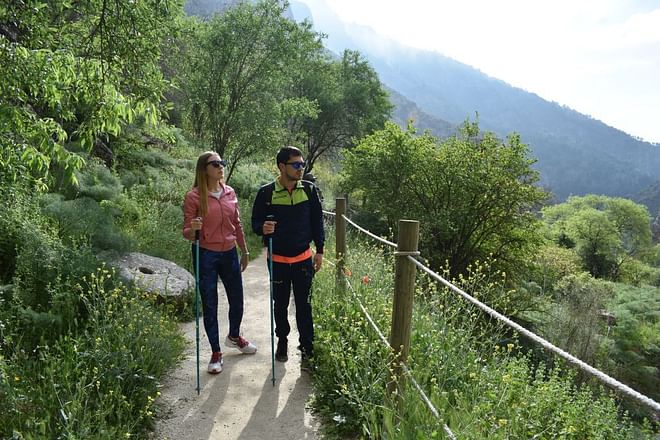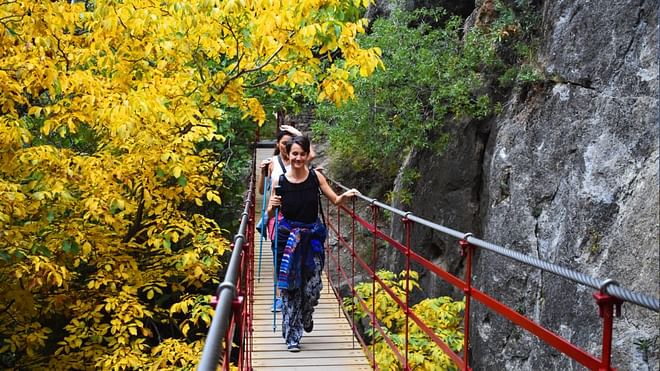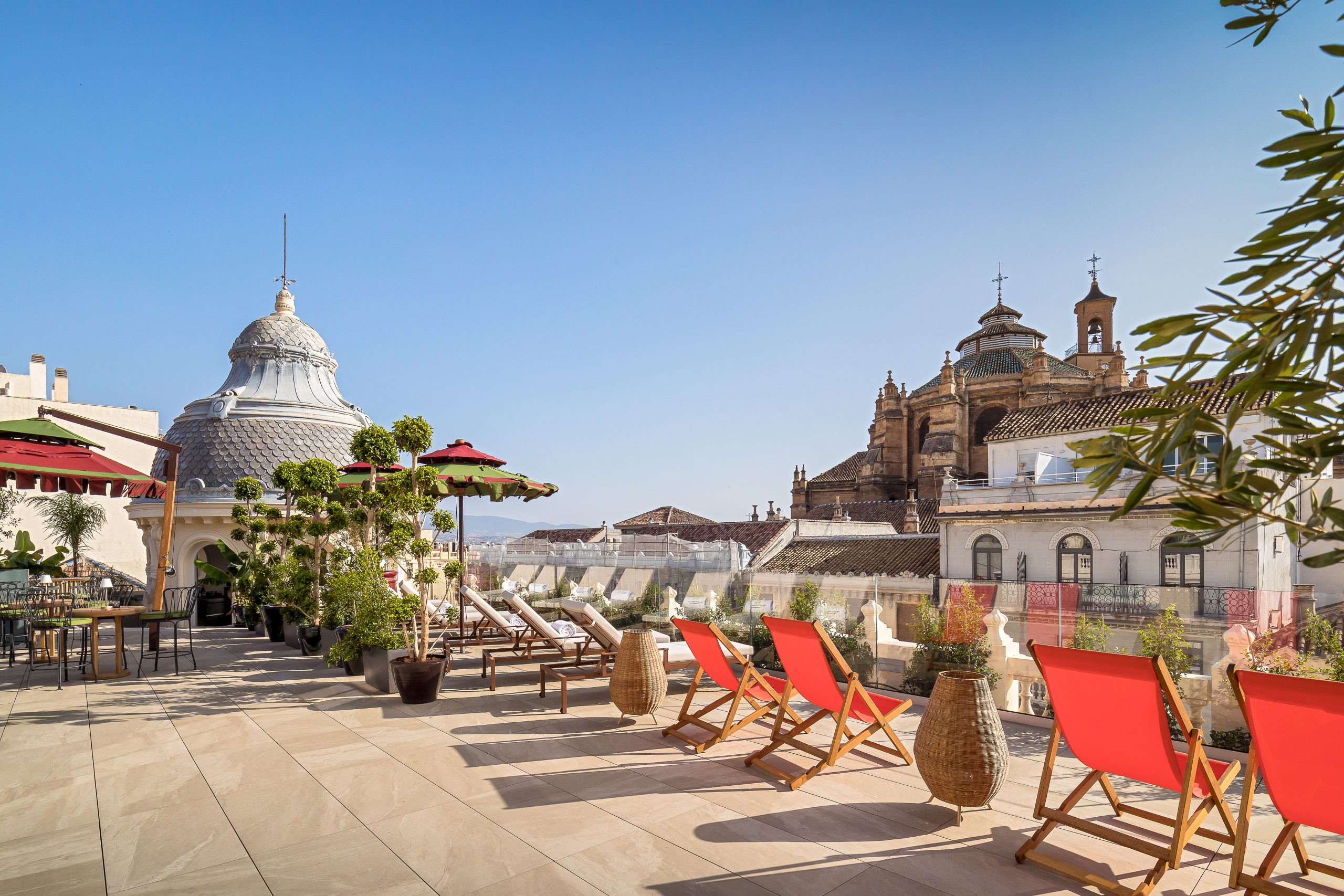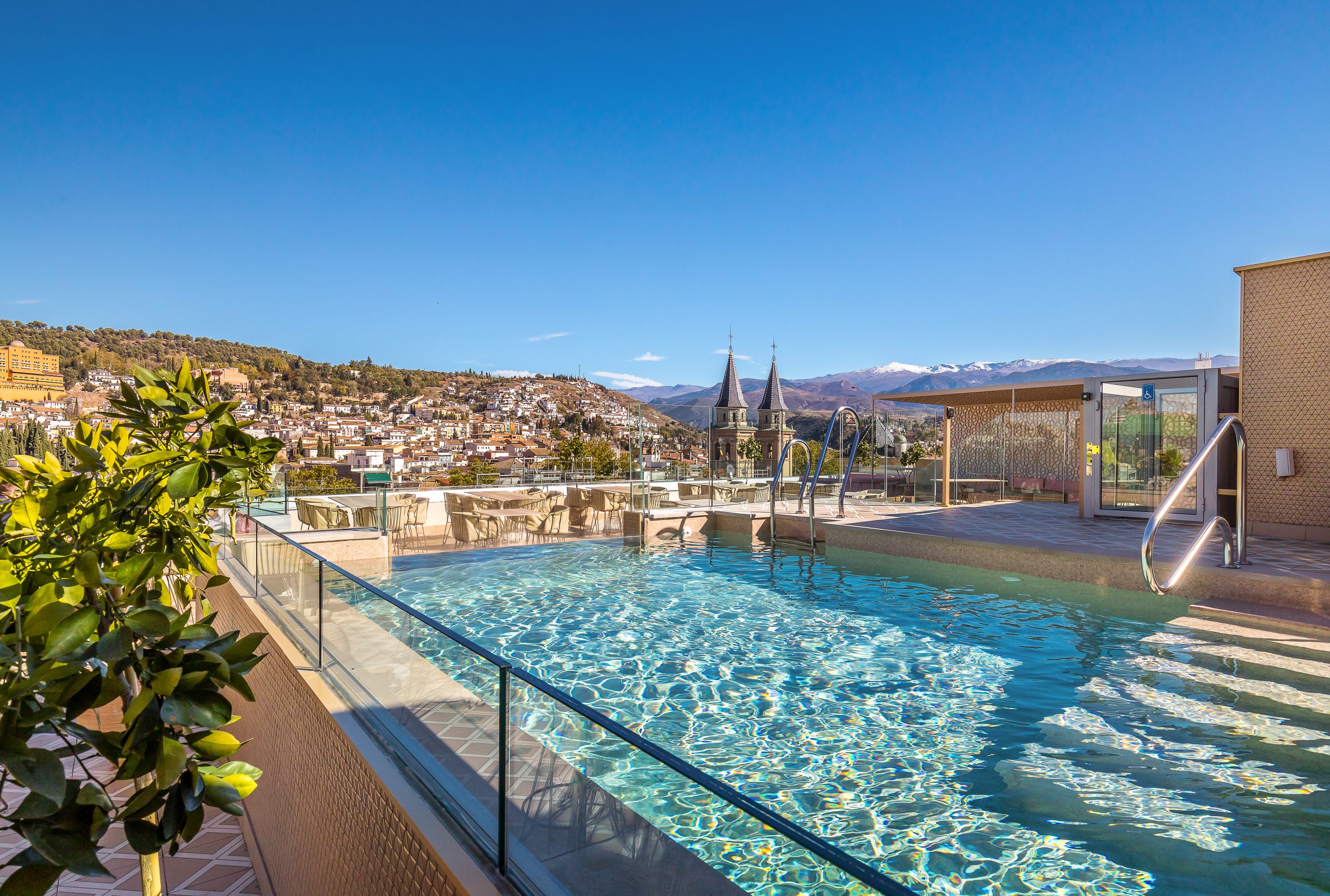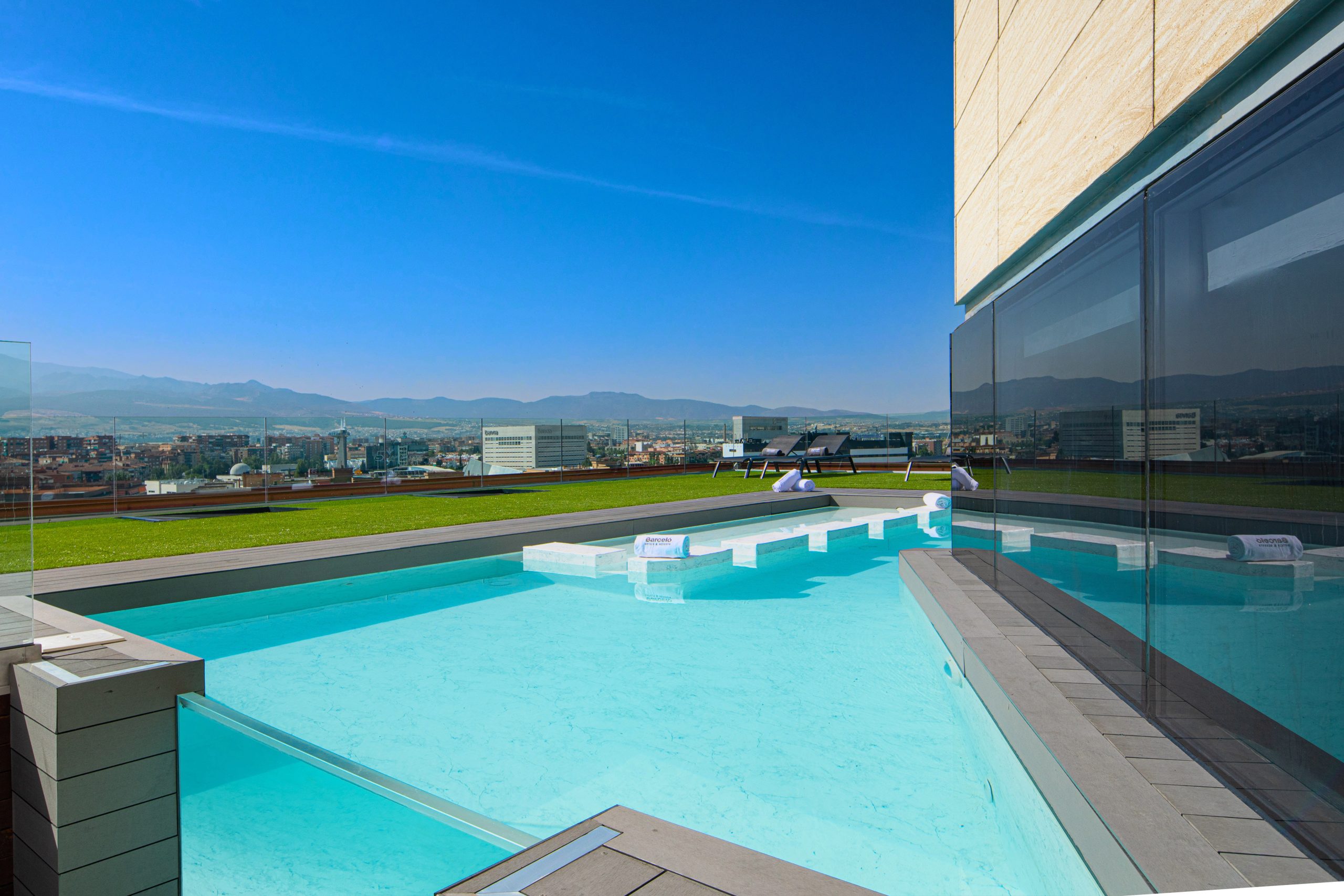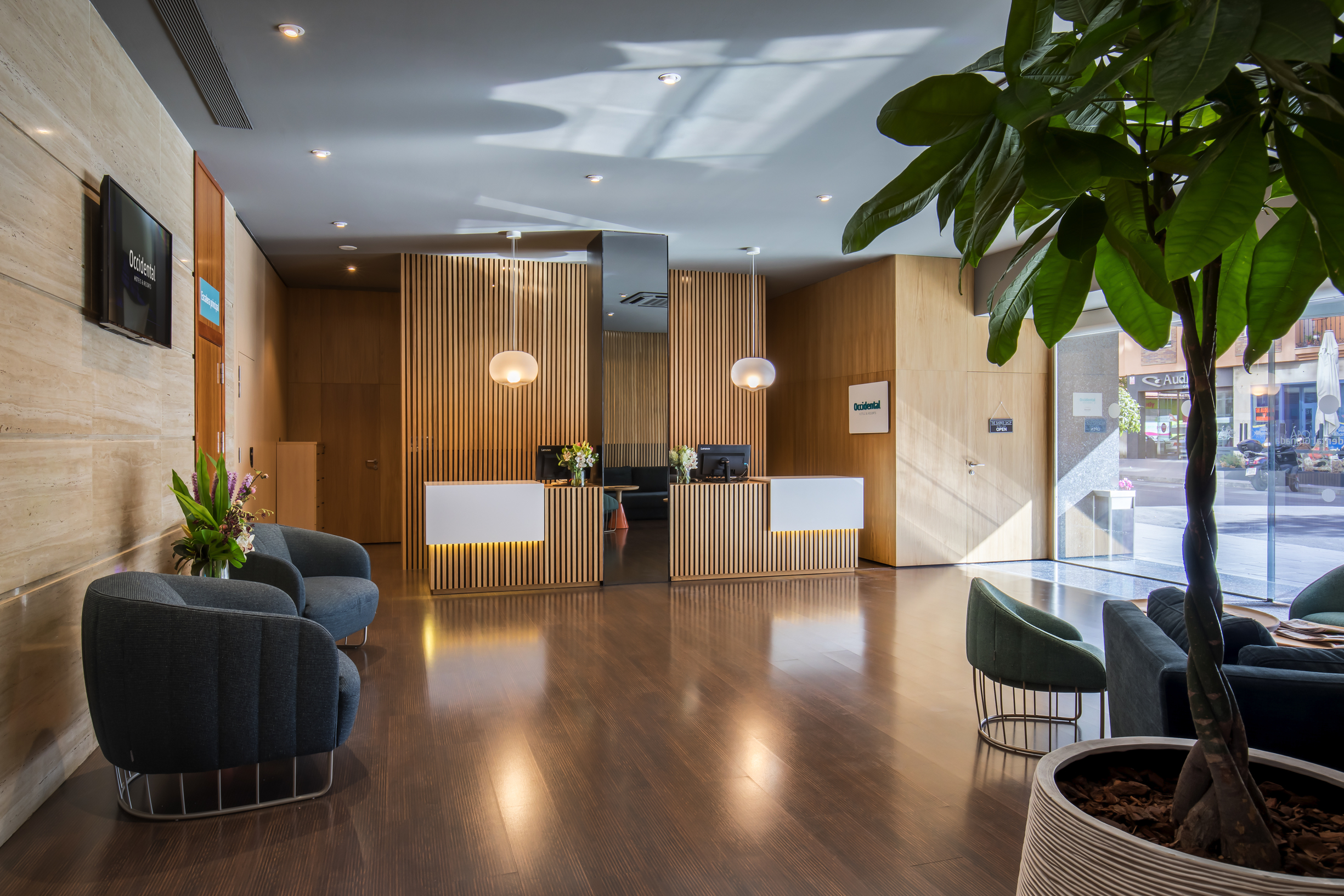Arab baths or hammams, the Moorish descendants of Roman baths, quickly popped up throughout the Al-Andalus region. They served as meeting points for residents—in shifts to keep men separate from women—, who would visit them regularly to bathe, get a haircut or massage, and simply relax. This custom was more than a matter of hygiene or pleasure; it was also spiritual. In Islam, water is a purifying element that washes away actions that go against the precepts of the Koran. Located next to the Darro River, this was one of the 21 Arab baths that existed in Moorish Granada, of which the oldest was El Bañuelo. It is the best preserved of the city’s four historic hammams. In present day, people visit the modern baths that imitate the older versions to recreate the experience and enjoy some relaxation and mint tea.
History of El Bañuelo, the public hammam that survived
El Bañuelo was built in the 11th century during the reign of the Zirid King Balis and financed by his Jewish vizier, the philosopher and poet Samuel ibn Naghrillah. It was also known as Baños del Nogal or Baños de los Axares (‘of health’), after the neighbourhood where it was located. El Bañuelo is the oldest civil building in Granada and one of the best-preserved hammams in Muslim Spain.
The conquest of Granada marked the decline of Arab baths, which were viewed by Christians as places of questionable morality, comparable to brothels. Many were destroyed or reconverted, which explains why so few remain today. El Bañuelo is an exception because it was used as a public washing place, leaving the original structure intact. In the 20th century, the great architect and restorer Leopoldo Torres Balbás processed its expropriation—at the time the baths formed part of a Christian home that was built at a later date—, removed the washing facility from the main hall and installed marble floors, among many other restoration efforts.
Today, this Cultural Heritage Site can be visited for free by entering through the former Christian home. The facility, which has a rectangular shape, is made up of several rooms that comprise the classic Arab bath model. The lobby, where people relaxed and left their clothes, leads to a cool room in which the water is at room temperature throughout the year. This is followed by the main or warm room, the largest at El Bañuelo and the one that usually appears in photos due to its stunning dome with octagonal star-shaped skylights that allow light to come in and create a magical atmosphere. The room is surrounded by three galleries topped with horseshoe arches perched above columns. The last area is the hot room or sauna, where a hole in the wall shows the original location of the water heater that made it possible to reach high temperatures. The water conduits below the floor required visitors to wear wooden sandals to avoid burning their feet.
In search of old baths hidden in Granada
The Albaicín quarter has two additional medieval hammams that are unfortunately not in as good condition as El Bañuelo. On Calle Elvira in the western end of the neighbourhood, we come across the Arab bath of Hernando de Zafra. Although it dates back to the late 12th century, the hammam was given this name because it was donated by the Catholic Monarchs to their famous secretary after Granada was conquered. It is adjacent to the Church of San Andrés, which was built on the former site of a mosque that this historic hammam, now forgotten and hidden behind a graffiti-filled wall, belonged to.
The little known Arab baths on Calle del Agua, located on numbers 1, 3 and 5 of this street, were built in the late 12th or early 13th century and are believed to have been the largest in Muslim Granada. Today, they can only be visited with permission from a neighbourhood association on Cuesta de la Almona. Unfortunately, Albaicín’s two Arab baths are abandoned and in a sad state of decay, resulting in complaints from nearby residents to the Autonomous Government of Andalusia, which has promised to restore the baths.
This is not the case of the Comares Palace Arab baths, located between the palace they owe their name to and the Palace of the Lions, in the heart of the Nasrid Palaces of the Alhambra. This hammam was recently reopened to the public following a lengthy restoration and it is one of the few to remain intact in the Western world. It was built in the 14th century under the reigns of the sultans Ismail (1314-1325) and Yusúf I (1333-1354), and unlike El Bañuelo, this was a private bath for the exclusive use of the royal family, as noted by the luxurious decor. There is an area for resting, known as the Room of Beds, that hints at one of the main uses of this hammam: politics and diplomatic relations. However, according to legend, the facility had another royal purpose: it is said that the sultan, looking down from a gallery above the Room of Beds, would gaze at women as they undressed before entering the baths. He would then toss an apple to the one he liked the most as a sign that she had been chosen to spend the night with him.
Until December 2017, the baths were closed to the public and could only be peered at through small holes and cracks in the adjacent palaces.
Feel like a sultan: modern Arab baths in Granada
After so much sightseeing, there is nothing like stepping into the shoes of a Nasrid king and enjoying a steam bath. Luckily, this experience has become popular in Granada and a number of modern Arab baths have opened their doors. They faithfully reproduce the aesthetic of hammams from the Nasrid era, with additional services to make them even more enticing, including massage rooms and tea shops. Some of them, such as Hammam Al Andalus, have even been built on the original site of 13th century Arab baths that had disappeared. Others, such as Baños Aljibe San Miguel and Baños Elvira, are great alternatives where you can feel like a sultan for approximately €25.




































































